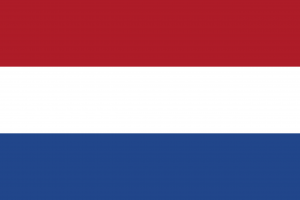Language/Dutch/Grammar/Plurals
Hi Dutch learners! 😊
In this lesson, we will learn how to form plurals in Dutch. Knowing the plural forms is crucial to communicate effectively in the language.
Take some time to dive into these other pages after completing this lesson: Future Tense, Conditional Mood in Dutch, Cardinal Numbers in Dutch & Conditional Mood.
What are plurals?[edit | edit source]
Plurals are a grammatical category that refers to more than one of a noun. In English, most plurals are formed by adding -s or -es to the end of the word. In Dutch, however, forming plurals is a bit more complex.
In Dutch, the plural form of a word can be formed in several ways:
Adding -en to the singular[edit | edit source]
Many Dutch nouns form their plural by adding -en to the singular form. Here are some examples:
| Dutch | Pronunciation | English |
|---|---|---|
| huis (house) | /hœys/ | houses |
| kast (cupboard) | /kɑst/ | cupboards |
| man (man) | /mɑn/ | men |
Note that some nouns that end in -el or -er will drop the -e before adding -en. For example:
| Dutch | Pronunciation | English |
|---|---|---|
| tafel (table) | /taːfəɫ/ | tables |
| vinger (finger) | /ˈvɪŋər/ | fingers |
| leer (leather) | /leːr/ | leathers |
Adding -s to the singular[edit | edit source]
This is the easiest way to form the plural in Dutch. Just add -s to the singular form. However, this is less common than adding -en. Here are some examples:
| Dutch | Pronunciation | English |
|---|---|---|
| auto (car) | /'ɑuto/ | cars |
| hotel (hotel) | /ho'tɛl/ | hotels |
| film (movie) | /fɪlm/ | movies |
Vowel change[edit | edit source]
Some words form their plural by changing the vowel in the singular form. This is common for words that end in a single vowel, such as:
| Dutch | Pronunciation | English |
|---|---|---|
| man (man) | /mɑn/ | men |
| stad (city) | /stɑt/ | cities |
| kind (child) | /kɪnt/ | children |
Irregular plurals[edit | edit source]
Some Dutch words have an irregular plural, which means that they do not follow any of the above rules. Here are some examples:
| Dutch | Pronunciation | English |
|---|---|---|
| kind (goat) | /kɪnt/ | goats |
| rund (cow) | /rʏnt/ | cows |
| oog (eye) | /oːx/ | eyes |
It is important to learn the irregular plurals by heart.
Different meanings for singular and plural[edit | edit source]
In Dutch, some words have different meanings in singular and plural form. Here are some examples:
| Dutch | Pronunciation | English |
|---|---|---|
| kip (chicken) | /kɪp/ | singular: chicken, plural: banknote |
| plaats (place) | /plats/ | singular: place, plural: seats |
| (radio) omroep (broadcasting company) | /ˈɔmruːp/ | singular: broadcasting company, plural: broadcasts |
Make sure to pay attention to the context to not confuse the different meanings.
Exercise[edit | edit source]
Create plurals for the following Dutch words:
- stoel (chair)
- fiets (bicycle)
- leraar (teacher)
- glas (glass)
- hand (hand)
Answers:
- stoelen
- fietsen
- leraren
- glazen
- handen
Dialogue[edit | edit source]
Here's an example dialogue to illustrate plural forms in context:
- Person 1: Ik heb een nieuwe fiets gekocht. (I bought a new bike.)
- Person 2: Leuk, heb je ook nieuwe fietsenrekken gekocht? (Nice, did you also buy new bike racks?)
- Person 1: Ja, twee stuks. (Yes, two pieces.)
Cultural tips[edit | edit source]
- Dutch people are known for their love of cheese. Some famous Dutch cheeses are Gouda, Edam, and Maasdam. - Tulips are a symbol of the Netherlands. They were brought to the country from Turkey in the 16th century and have since become synonymous with Dutch culture. - When greeting someone in the Netherlands, it is customary to give three kisses on the cheek. The kisses are not actual kisses, but rather the sound of the lips touching the other person's cheek.
To improve your Dutch Grammar, you can also use the Polyglot Club website. Find native speakers and ask them any questions!
Sources[edit | edit source]
- How to form plural nouns in Dutch - ielanguages.com
- Dutch Grammar • Plural ending: -s or -en?
- Dutch grammar - Wikipedia
Other Lessons[edit | edit source]
- How to use “can” in Dutch
- The Instrumental Case in Dutch
- How to use “must” in Dutch
- Questions
- Nouns
- How to use “to speak” in Dutch
- Future Tense
- The Nominative Case in Dutch
- Plural
- Present Continuous in Dutch

